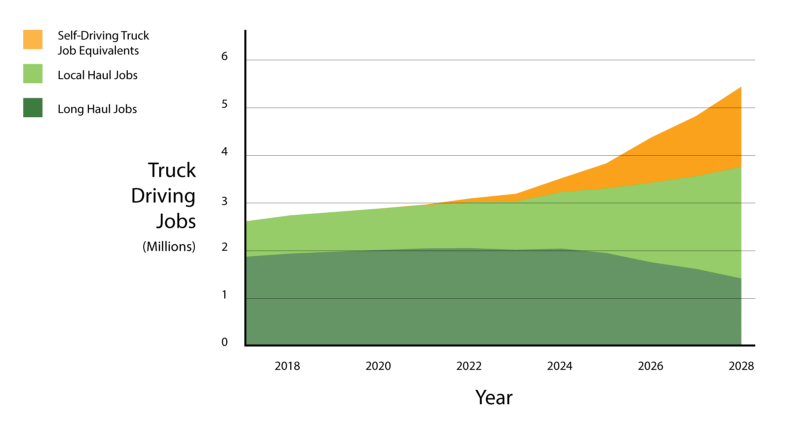Self-driving trucks have been the topic of the year for 2018 so far. With last year’s announcement of the Tesla Truck, it has only grown in hype. Uber and Tesla have been front running the autonomous market for some time and are in competition to have the first truck on the market. But there are other companies around the world as well in regions such as Asia and Europe. The concept of a self-driving truck has been around for years, so why all the commotion about it now?
The 2017 market was rough, the driver shortage pairs with a surging transportation demand meant that carriers were charging as much as a 30% increase on long routes compared to the prices from the year prior. These increases haven’t gone down for 2018 either as the driver shortage is still an issue. Adding capacity is difficult if there are not enough drivers. The 2018 market has had a good economy and the growth of e-commerce has been leading the charge in capacity increases.
Within the chaos of the shortage and spot rate increases, autonomous trucking is becoming an important figure. Truckers are not fans of the autonomous trucks, but fear not, they don’t plan to take away your jobs. Autonomous trucks are here to help you meet the capacity crunching but they require drivers. The concept of a fully autonomous truck that will go from dock to dock is a long way away, but the ability to drive on highways is right around the corner.
Projections indicate that future trucking will be heavily divided into long-haul transportation that reaches distribution hubs at the edges of cities and local-haul transportation that move the freight within city limits. The autonomous trucks are most efficient in long-haul situations, which is what can cause driver fatigue after they make these time-consuming journeys. These trucks don’t work so well in the tight cities, truck drivers know this from their own personal experience. Autonomous trucks are very far away from achieving the necessary skills to navigate city streets and complex loading docks, so a driver is needed for such operations.

Uber, in a from February, estimates that by 2028, 1 million self-driving trucks will be on the roads if R&D was to move at a fast pace. Their projections (as seen in the chart) without the self-driving trucks show that more than 766,000 truck driving jobs would be added by the 2028. And when they put self-driving trucks into their scenario, they see the jobs increase further! They also make projections also highlight the movement from long-haul to local-haul jobs, which is a shift of 1 million jobs with the addition of 400,000 jobs needed for increased demand of freight volume.
The bottom line? These self-driving trucks are going to benefit carriers and drivers equally. They will lower operating costs, which could lower the cost of goods being moved, and they will increase overall efficiency. These trucks also provide safety benefits on the road. Avoiding collisions and reducing driver fatigue are just a few aspects of their operation. This technology just opens the doors to the possibilities they can bring to the industry. The biggest benefit, is the increased number of jobs that will introduced with self-driving trucks. So truckers beware, you will have more opportunities in the future!

